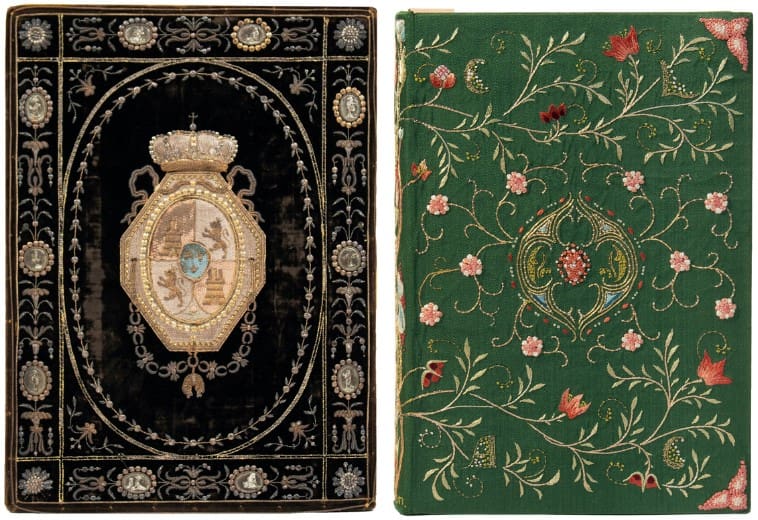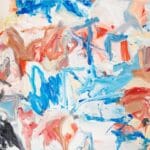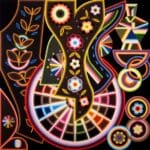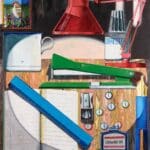Featured image: Phillip Allen, “Low Memory (Strange Roads to Walk Version)” (2023), oil on panel, 56 1/2 x 49 x 3 inches
Phillip Allen’s paintings are paradoxes that have stayed with me ever since I first saw his work in 2013 at Kerlin Gallery in Dublin. As I stated in my review at the time, it was evident to me that “Allen doesn’t define his commitment through style but through an exploration of materiality.” This was the beginning of what I saw in his art.
Seven years later, during the first months of the pandemic, when New York was shut down, I saw his debut exhibition at Miles McEnery Gallery. By then, I had come to think of him as “one of the most wonderfully challenging painters around.” After visiting his current self-titled exhibition at Miles McEnery, I feel even more determined to pinpoint exactly what Allen does in his work. Something about his visual preoccupations speaks to the viewer’s mind and eye, the connections and ruptures between physical and visual sensations, in tandem with our capacity to daydream and to reflect upon the bond between the ephemeral and the permanent. The paintings embody the joy of looking and the space of self-reflection such elation might bring us.
Read the original article here… and return to share your thoughts below.

















